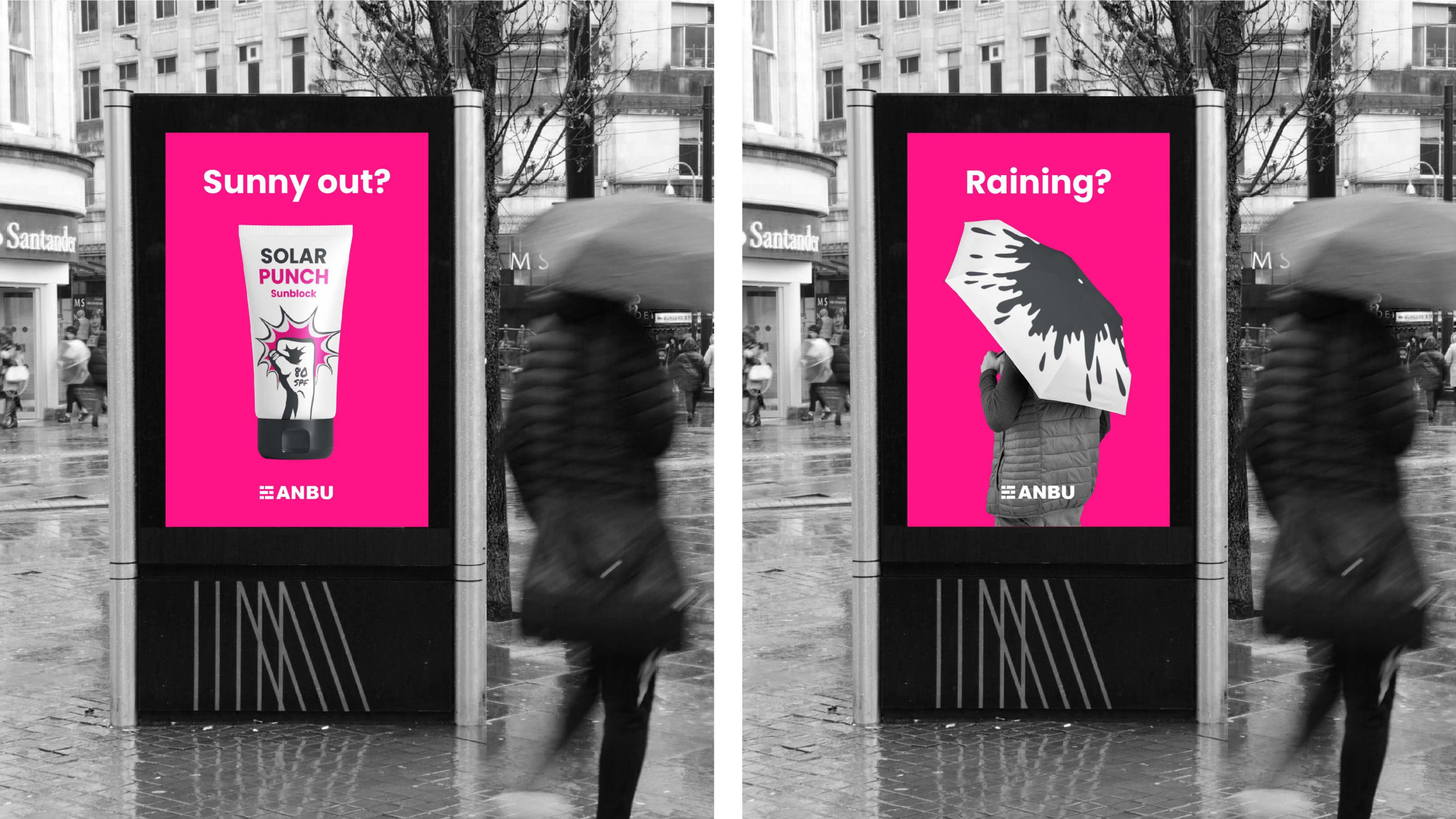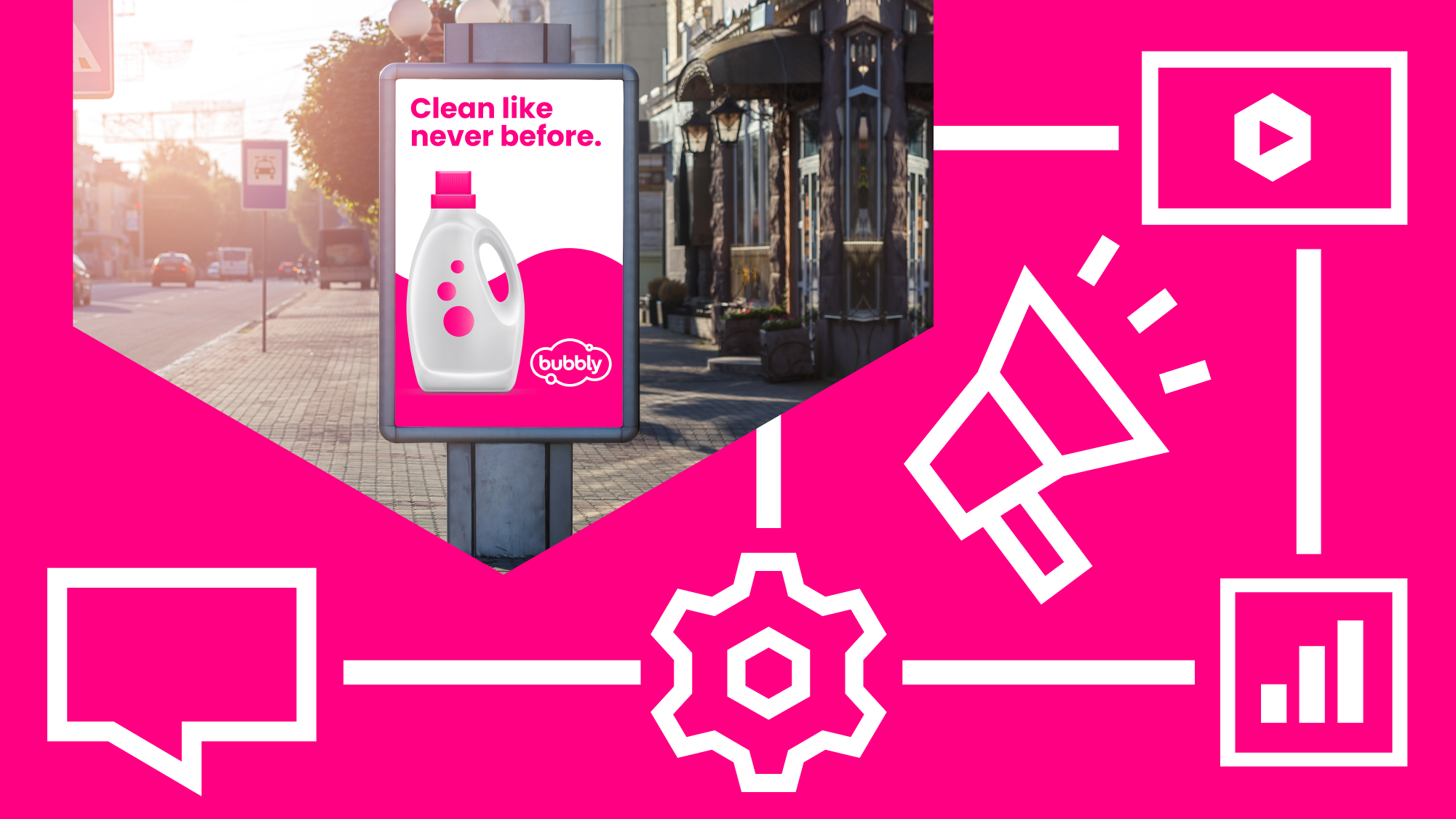Intro to pDOOH

Programmatic digital out of home, also known as pDOOH, refers to the automation of out of home (OOH) advertising.
This leverages machine learning and computing to plan, buy, target, sell, deliver and measure ads across digital screens. What is inherently different about pDOOH, in comparison to OOH, is the shift towards audience-centric buys, which leverage various data touchpoints to reach specific audience segments on-the-go.
Here’s why DOOH is a great medium.
Larger than life or incomparable size creating impactful visual canvases
Hard to ignore, DOOH is unskippable and unblockable
Memorable and impactful, think of Times Square or Shibuya Crossing!
Support omnichannel campaigns and enhance overall awareness of more digital-centric campaigns
What is the difference between DOOH and pDOOH?
We like to think that pDOOH is an enhanced version of OOH and plays an integral role in driving innovation within the industry. Essentially the concept of pDOOH is the same as DOOH, an ad is delivered to a digital screen in real-time, however, how that ad was bought, sold and/or delivered is different. pDOOH has automated the process of buying, selling and delivering inventory across digital screens and offers enhanced capabilities to traditional OOH and DOOH.
In addition, pDOOH does something that traditional OOH and DOOH cannot and that’s audience targeting and measurement. We wrote a blog outlining the fundamentals of DOOH vs pDOOH and how the two are similar and different.
What are the benefits of pDOOH for advertisers?
Despite the complex technical aspects, pDOOH has ultimately simplified the buying and selling process of DOOH eliminating a plethora of manual requirements.
Other benefits include:
Accessible and easy to use, connect directly with leading DSPs and provides 24/7 support
Buyers have more control over parameters where they can run content and what audience they are trying to reach
Advertisers can run various creative and messaging within a campaign and change or optimize it in real-time
Opens up unparalleled audience datasets and customizable segments
Improve results with data-driven tactics, or even layer multiple datasets for more accuracy
Advertisers can buy across multiple publishers at the same time
Unlock more precise audience reach (from one-to-many to one-to-select-many)
Simplifying the CMS process of OOH, optimizing scheduling and delivery for the industry as a whole
Ability to measure impact of ads through in-store visits (footfall attribution), brand awareness and other metrics
What are the benefits pDOOH for publishers?
Audience-based impression delivery
Monetize otherwise unsold inventory and expands circle of potential customers
Offers more control of inventory, from location to format to CPM and more
Adds additional revenue streams for unsold inventory via Private Marketplaces (PMPs) or Open Exchange
Measure success of content served across owned inventory
The important role of data.
The largest area of innovation driven from pDOOH is the advent of data-driven targeting and measurement. Programmatic allows you to set specific parameters or conditions (also known as triggers) for a campaign or inventory and unleash the potential to power campaigns with unlimited data sets from a myriad of data sources. Only when the selected conditions are met will an ad or content be served onto the screen.
Examples of data or conditions may include:
audience demographics and behaviours
mobile device data
weather
time of day
geofencing (polygons of a specific boundary)
Ultimately, the datasets are endless and advertisers have the ability to customize each campaign to their specific needs. Leveraging data ensures that content is served to the right location, the right audience and at the right time, and also that the messaging and creative are making the most impact possible.
How it all works.
Using the buy side as an example, an advertiser sets the parameters for their campaign (region, location and other data fields) along with the price they are willing to pay for it.
This goes through the DSP either in an open auction (Open RTB) or private marketplace (PMP), transacts with an Exchange or SSP for the agreed bid or sale.
The ad is then served across the appropriate screen or screens and delivery is complete. Also mapped out is the direct sale of the inventory, still done programmatically and explained below.
Buying pDOOH.
There are several different ways to purchase pDOOH inventory for a campaign. The most common type would be open real-time bidding or “auction” bidding where an ad slot is offered to a group of bidders who each set an amount of how much they would pay for the ad slot. Within milliseconds, the best bid is deemed the winner and the ad is served. There are also private deals or “real-time bidding (RTB)” where media owners may offer special access to buyers with a pre-existing relationship with the media owner or special credentials. This gives the buyer first rights to inventory in an auction-style setting. Finally, there is programmatic guarantee where a media owner and a buyer have an agreement that gives the buyer access to inventory before others can bid on it.
How to get started with pDOOH.
There is no question that pDOOH can elevate your campaign or your inventory. A great place to start is to leverage pDOOH as an additional channel for an upcoming or existing campaign, this will allow for you to see how it compliments your campaign strategy. pDOOH can expand the reach of your campaign to new audiences or elevate a mobile or interactive campaign. You can easily repurpose existing creative or build new formats to leverage in a test campaign.
We are more than happy to answer any questions you may have to help facilitate a test, reach out if you’d like to connect with a member of our team. We recommend working with a recognized DSP or pDOOH company, there are several on the market including the Hivestack DSP.
Measuring Success.
So, you’ve launched a pDOOH campaign, now what? You likely set the campaign up with some criteria for objectively reaching success, these campaign metrics will not only help guide the analysis on post-campaign success but will also be used to optimize the campaign while it is still in delivery.
In general, impressions served is the most common metric used for every campaign and, unlike the one-to-one measurable metric for digital and the one-to-many for OOH, pDOOH will look at a variety of factors to define reach, engagement and overall impact of a campaign. In DOOH, generally many people will see your ad, not just those within your chosen target audience, this is often known as “one-to-many” medium. With pDOOH we are able to narrow this down to a “one-to-select-many” (Hivestack term) by using both targeting data to serve audiences that we predicted will be the most relevant and we use impression multipliers to better understand the number of impressions one ad play should count for.
There are several solutions such as estimation of views, visual sensors, QR codes or downloaded data and likelihood metrics and footfall traffic - which can track when ads are being seen, engagement or even conversion.
What’s Next?
At the end of the day, pDOOH is a relatively new medium and will only continue to grow in popularity and innovate further. At Hivestack, we are excited to play an integral role in bringing programmatic to the DOOH space across the globe for media buyers, media owners and omnichannel providers alike.
Sign up for our newsletter for industry updates, education, announcements and helpful tips from our team at Hivestack.
Links We Love.
Still interested in learning more about pDOOH? Below are a few additional resources that we love.
DPAA for all things Digital Out of Home
IAB for research, standards and guidelines
Digital Marketing Institute’s The Beginner’s Guide to Programmatic
Check out our pDOOH glossary for a full breakdown of industry terms
Interested in learning more about pDOOH? Refer to our glossary here for common industry terms.


